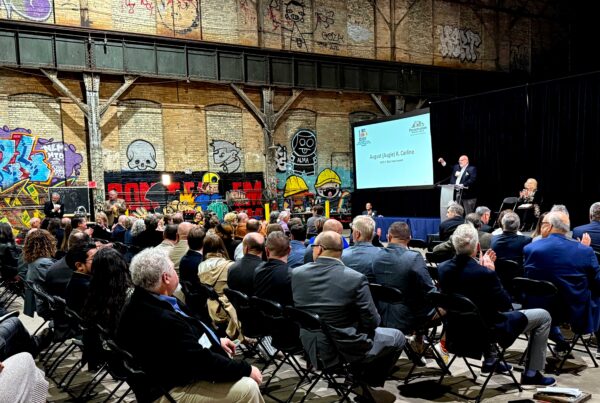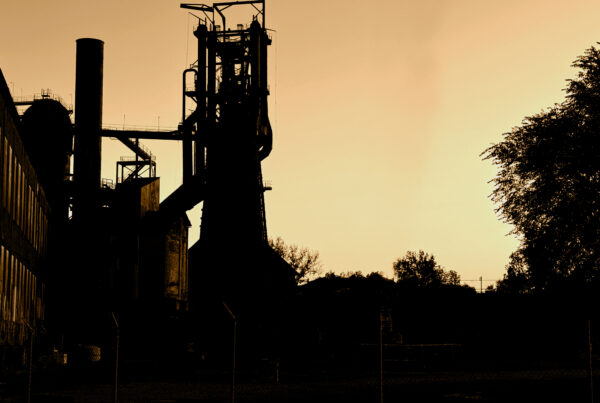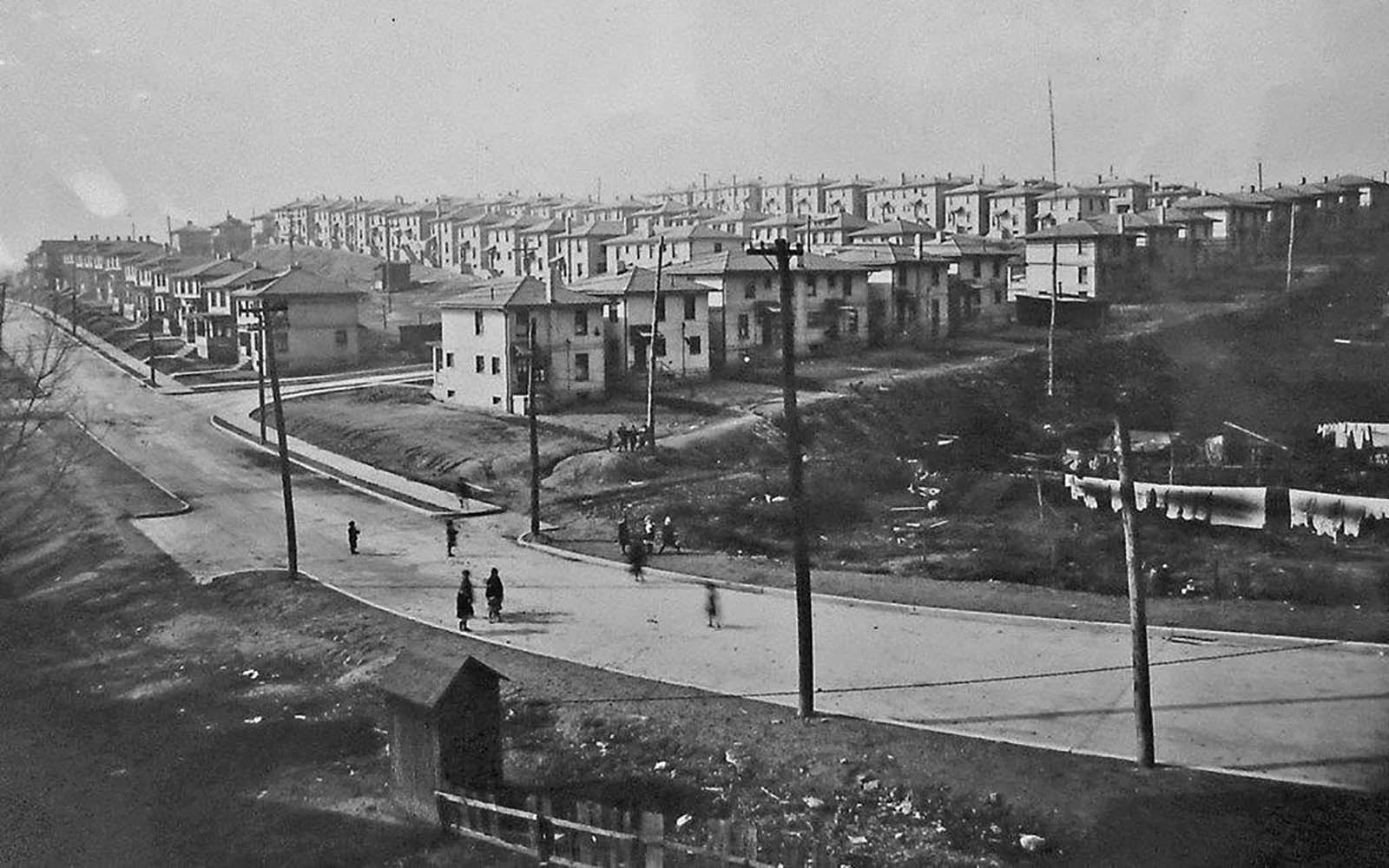
Image: An image from the Bruce Dreisbach Collection of what is now the Cement City Historic District in Donora, PA. Built 1916-1917 as housing for employees at American Steel & Wire’s Donora plant, this community of Prairie-style buildings is noted for the innovative use of poured-in-place concrete construction.
Community Spotlight
The Community Spotlight series features Rivers of Steel’s partner organizations whose work contributes to the vibrancy of the Rivers of Steel National Heritage Area.
By Gita Michulka, Contributing Writer
 Donora Historical Society’s Bruce Dreisbach Collection Opens a Window to Everyday Life in the Early 1900s
Donora Historical Society’s Bruce Dreisbach Collection Opens a Window to Everyday Life in the Early 1900s
It’s safe to say photographer Bruce Dreisbach took his job as quality control technician at the American Steel & Wire Company very seriously. Tasked with recording the daily goings-on at the mill, his love of photography also bled out into his daily life. On and off the job, Dreisbach spent most of his time photographing his surroundings, and a collection of his glass plate negatives now offers one of the most comprehensive glimpses back in time in the region.
“The thing that’s exciting for us is we’re able to tell stories,” says Mark Pawelec, a long-standing volunteer at the Donora Historical Society and Smog Museum. “A story sometimes isn’t as good as when you do not have pictures that accompany it, and these do that for us. We can show people exactly how life was like in Donora a hundred years ago . . . whether it was related to the steel mill or some of the different other subjects that we promote.”
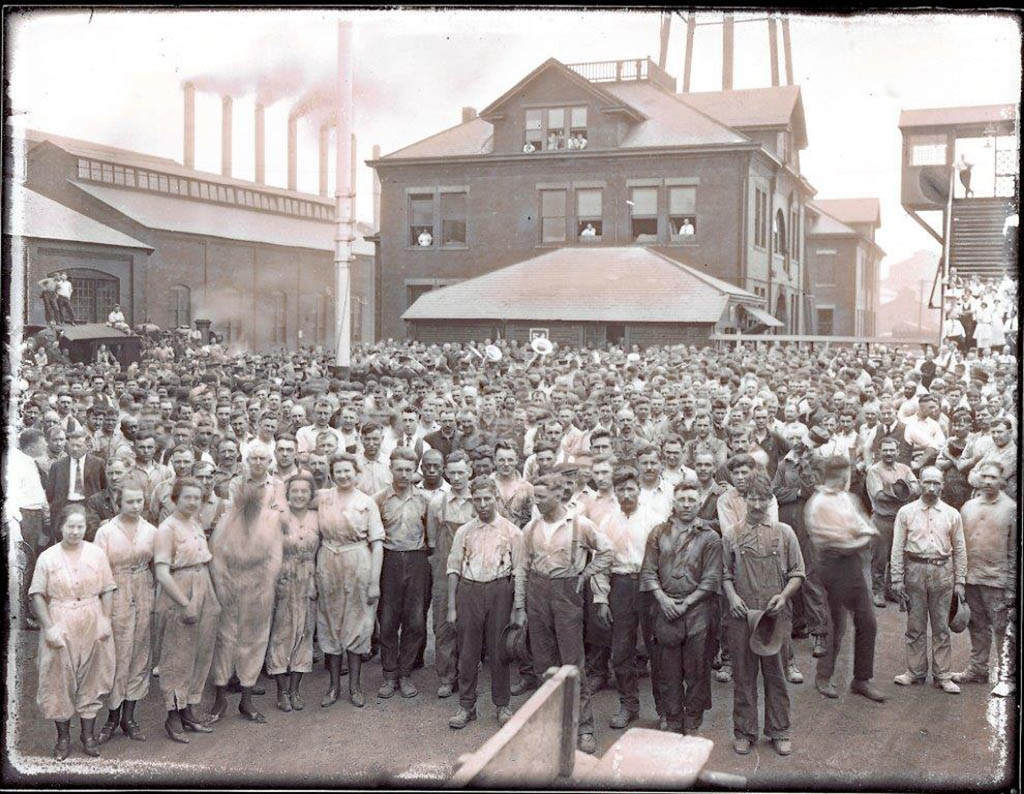
American Steel & Wire Workers
When Dreisbach passed away in 1959, his collection of thousands of negatives was passed along to his widow, and a portion of that collection was found in her apartment when she died in 1986. With the help of funding from Rivers of Steel’s Mini-Grant Program, Pawelec and the other volunteers who run the Donora Historical Society have steadily been working to have the glass plates digitized and preserved.
Though the process can be painstaking, Pawelec is quick to point out the value in the project. “It’s really incredible,” notes Pawelec. “We’re so fortunate that somehow somebody had the wherewithal to preserve those glass plate negatives and not sell them. We have different documents, we had different photographs in our collection that kind of show the way life was like in Donora in the early 20th century, but we didn’t have a full collection of photographs, and that’s what these provide us.”
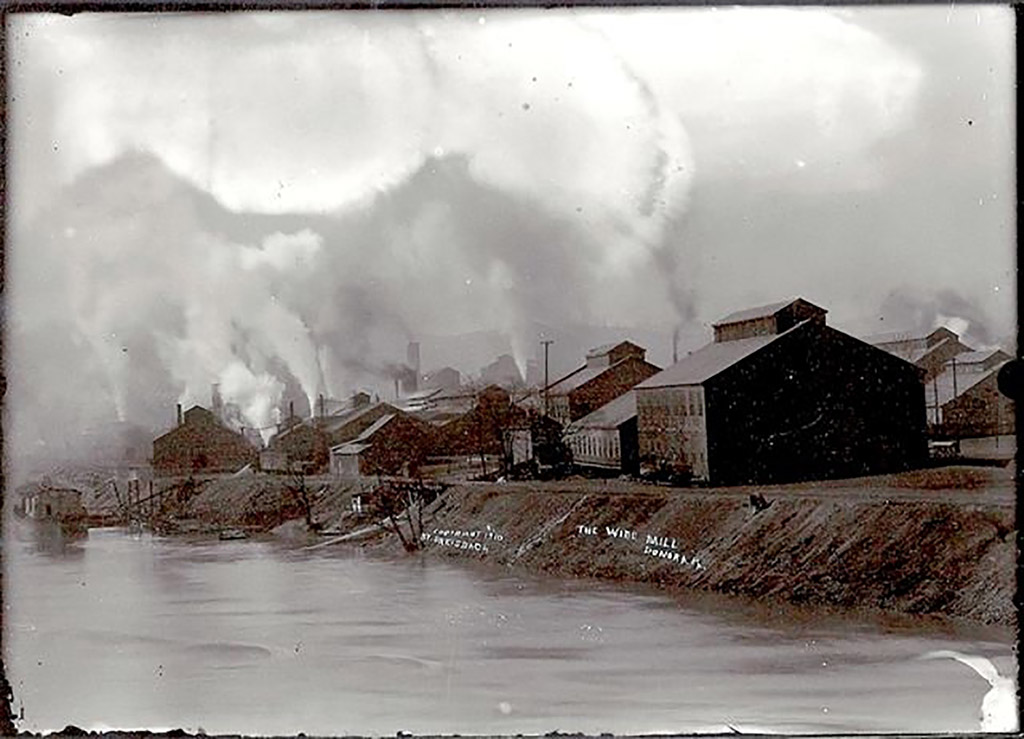
Captioned “The Wide Mill, Donora, PA.
Years ago, previous museum volunteers who were familiar with a working steel mill did a cursory identification of the negatives to begin sorting them by theme. Over the years, as the museum acquired funding, volunteers have continued to sort the images before taking batches of them to be processed at Bernie’s Photo Center in the Northside. Pawelec calls Bruce Klein, who owns and operates the shop, critical to the success of the project.
“Bruce takes the negatives and handles each one individually. It’s impressive the amount of expertise that he has with the old photographic technology. But more than that, our ability to hand deliver boxes of these plates ensures their safety and allows us to stretch the funding more than if we had to package them and ship them somewhere to be processed. We trust that Bruce will complete our projects with a high degree of quality, and he’s also extremely flexible as we work through the batches.”
The most recent round of funding from the 2021 Mini-Grant, along with Klein’s partnership, has allowed the Historical Society to process 70+ glass plates, nearly the end of the collection, with one exciting addition: digitizing five-foot-long panoramic photos of American Steel & Wire Company.
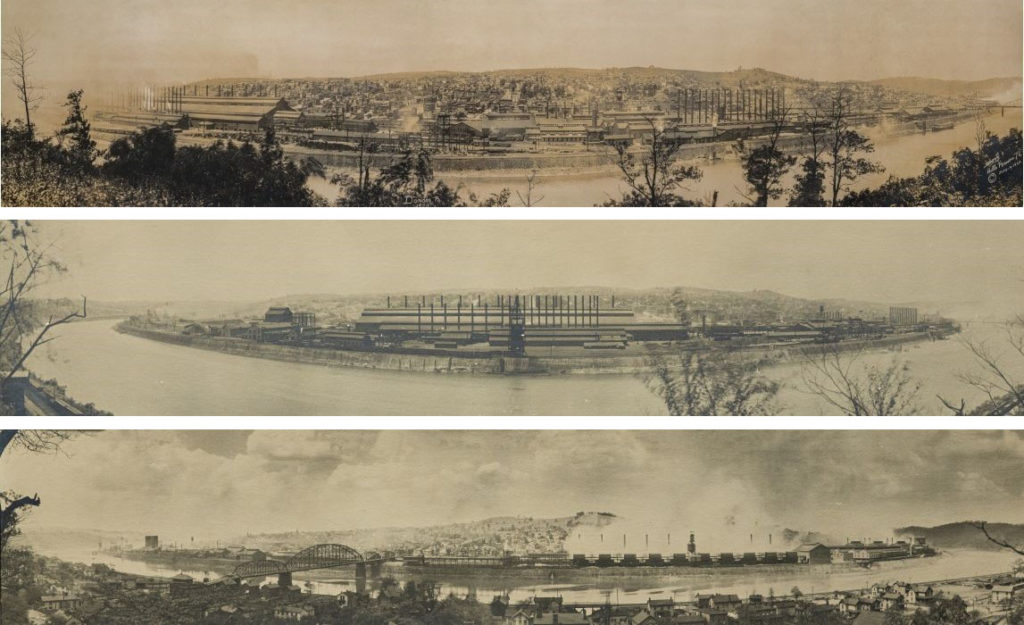
These images of American Steel & Wire’s Steel Mill and Zine Works, along with the neighboring scenery were digitized from five-foot long prints.
Dyno Nobel, an industrial and mining explosives manufacturer, currently occupies the site of the former Donora Zinc Works, with buildings that date to 1915. “After having multiple discussions with Dyno Nobel’s Donora Plant over the past few years, they have graciously loaned us these prints to have scanned,” says Pawelec. “To get any artifacts from the steel mill or Zinc Works is a rarity, so the fact that Dyno Nobel loaned us these photos is a huge get for the Donora Historical Society.”
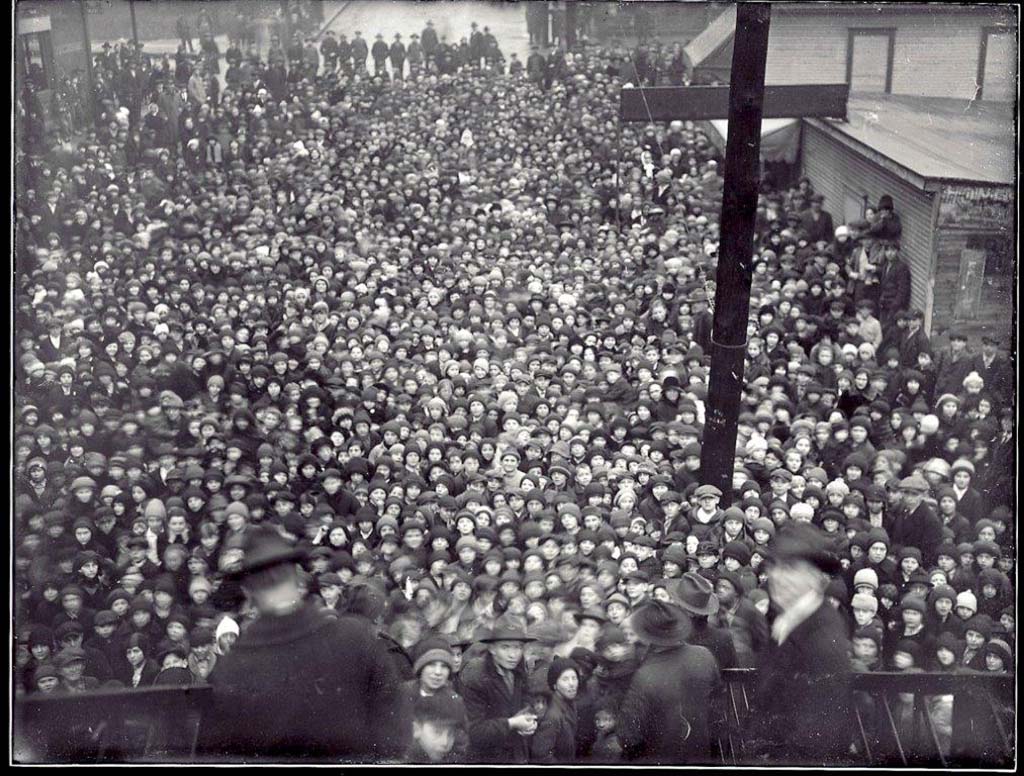
The Bruce Dreisbach Collection includes images of the community, not just of the mill sites. This image is of children at chrismas visiting the mill for a treat.
This new addition to the museum comes on the heels of the organization’s 75th anniversary, which has been working to preserve Donora’s past since 1946. Though they are most famous for their Smog Museum, the Dreisbach Collection has opened doors for programming and partnerships with the Carnegie Science Center, the Heinz History Center, and the University of Pittsburgh, among others, and has prompted tourism from the tri-state area.
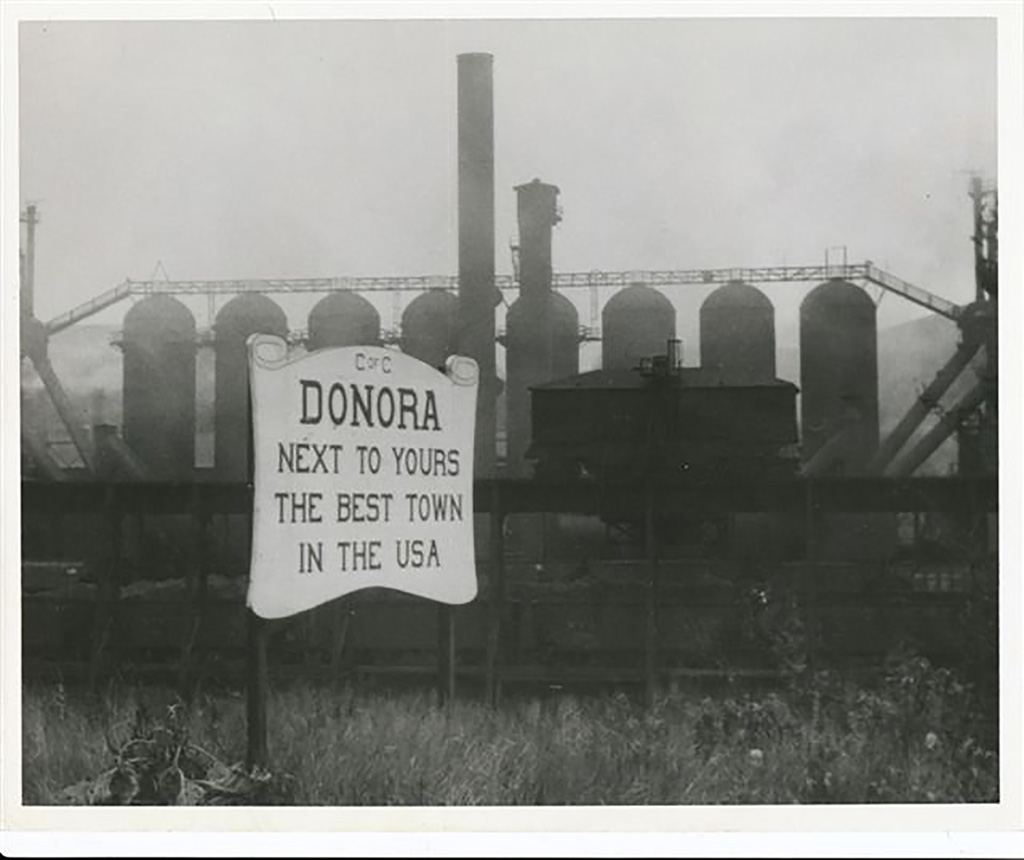 “Rivers of Steel is thrilled to play a part in the long-term conservation of this wonderful collection of glass plate negatives within the Donora Historical Society’s holdings,” said Ron Baraff, the director of historical resources and facilities for Rivers of Steel. “The story that their collection unveils of life in the mill is a wonderful complement to the rich archival holdings preserved by Rivers of Steel and other area repositories. Partnerships such as these, through our mini-grant program and regional cooperation, allow for all of us to tell, more succinctly, the enduring industrial and cultural history of our region and its legacies’ impact on the nation—and the world.”
“Rivers of Steel is thrilled to play a part in the long-term conservation of this wonderful collection of glass plate negatives within the Donora Historical Society’s holdings,” said Ron Baraff, the director of historical resources and facilities for Rivers of Steel. “The story that their collection unveils of life in the mill is a wonderful complement to the rich archival holdings preserved by Rivers of Steel and other area repositories. Partnerships such as these, through our mini-grant program and regional cooperation, allow for all of us to tell, more succinctly, the enduring industrial and cultural history of our region and its legacies’ impact on the nation—and the world.”
Visit the Donora Historical Society and Smog Museum website for more information on upcoming tours and presentations and to learn more about the Bruce Dreisbach Collection.
Additional funding for the preservation project has also been provided by the Pennsylvania Department of Conservation and Natural Resources, the Washington County Community Foundation, and a generous donor—Steve Acai from Raleigh, North Carolina, who has ties to Donora.
All images provided by the Donoral Historical Society.
About the Mini-Grant Program
Rivers of Steel’s Mini-Grant Program assists heritage-related sites and organizations as well as municipalities within the Rivers of Steel National Heritage Area to develop new and innovative programs, partnerships, exhibits, tours, and other initiatives. Funded projects support heritage tourism, enhance preservation efforts, involve the stewardship of natural resources, encourage outdoor recreation, and include collaborative partnerships. Through these efforts, Rivers of Steel seeks to identify, conserve, promote, and interpret the industrial and cultural heritage that defines southwestern Pennsylvania.
The Rivers of Steel National Heritage Area is one of twelve supported by the Pennsylvania Department of Conservation and Natural Resources (DCNR). Funding is provided via DCNR’s Community Conservation Partnerships Program and the Environmental Stewardship Fund to Rivers of Steel, which administers the Mini-Grant Program. The Donora Historical Society. is one of six organizations who received Mini-Grant funding through this program in 2021.
Gita Michulka is a Pittsburgh-based marketing and communications consultant with over 15 years of experience promoting our region’s arts, recreation, and nonprofit assets.
If you’d like to know more about community projects supported by the Mini-Grant Program, read Gita’s recent article about The Westmoreland Museum of American Art’s latest exhibition, Stephen Towns: Declaration & Resistance.

 Donora Historical Society’s Bruce Dreisbach Collection Opens a Window to Everyday Life in the Early 1900s
Donora Historical Society’s Bruce Dreisbach Collection Opens a Window to Everyday Life in the Early 1900s